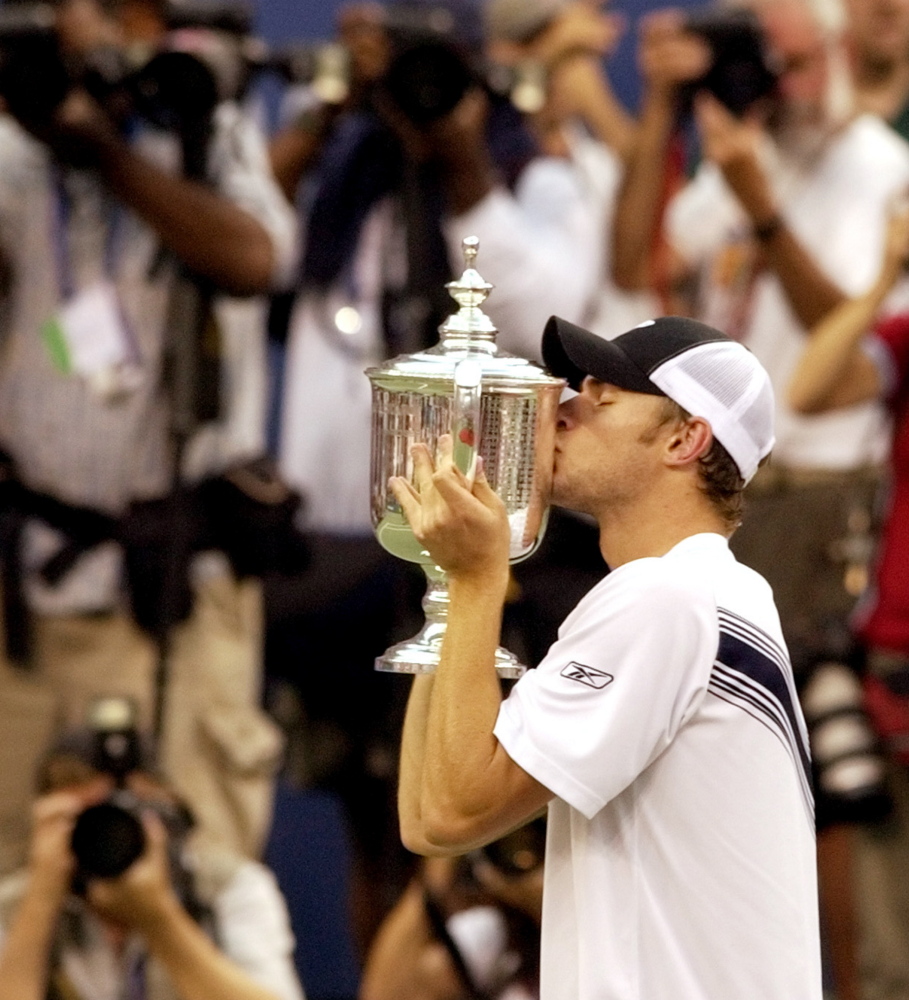As in all the Grand Slam tennis tournaments, the men’s singles competition at the U.S. Open that begins Monday will take seven rounds and two weeks to complete.
But anyone who wants to be sure of seeing a U.S. man play in the national championship had better pay attention in the first week.
By the time the second week starts, when the 128-player field is scheduled to be down to 32 for the fourth round, recent history says there’s only about a 25 percent chance a U.S. man still will be playing.
And winning the tournament? That hasn’t happened in one of the four Slams since Andy Roddick took the U.S. Open title in 2003.
So you can put major-event champion U.S. men’s tennis players on the list of endangered species in sports.
“They certainly have been lately,” said Mary Carillo of the Tennis Channel, a former pro and longtime TV commentator. “There is no denying we haven’t seen much greatness on a global standard the way we’re used to.
“This is a golden era of men’s tennis. There is something very special about the guys dominating – Andy Murray, Novak Djokovic, Rafael Nadal, Roger Federer – but they haven’t been American.”
In tennis’ open era, Roddick’s 2003 victory was the 51st for 12 different U.S. men in 143 editions of the Grand Slams – the Australian Open, French Open, Wimbledon and U.S. Open. Over that span the longest U.S. title drought was four years.
In the last five seasons, no U.S. man has advanced beyond the fourth round, and they have done that well in only five of the 19 tournaments.
“We had a great run for a long time,” said John McEnroe, who won four U.S. Opens and three Wimbledons from 1979-84. “We got spoiled and kept expecting it would keep happening.”
The generation that followed – now 40-somethings – included four more Grand Slam winners, Pete Sampras (14 titles), Andre Agassi (eight), Jim Courier (four) and Michael Chang (one). The first three earned No. 1 rankings; Chang got to No. 2.
WHAT WENT WRONG
During that long gap, several things combined to turn the top U.S. men into little more than one-(week)-and-done players.
• The worldwide growth of the game made it better.
• The traditional U.S. style, trying to end points quickly in an era of vastly improved service return and defensive skills, hurt that approach.
• The lack of compelling U.S. personalities and the appeal of other, less expensive sports to U.S. boys, which means the best male athletes aren’t getting into tennis at a time the men’s game demands more athleticism.
A DIVERSITY OF NATIONS
The return of tennis to the Olympics in 1988 after a 64-year absence spurred its development beyond the countries that traditionally produced top players. The breakup of the Soviet Union and Soviet bloc brought men’s champions from Russia, Croatia and Serbia.
“It’s been great for tennis globally but tough for Americans,” Chang said.
In 1989, when Chang won the French Open at 17, there were 39 U.S. men among the 128 at Wimbledon. In 2003, there were 12. This year there were nine.
Wimbledon had men’s players from 28 countries in 1989 and from 44 this year. In the 15 Grand Slams since a U.S. man last reached the quarters, 16 countries had quarterfinalists, with Spain, Poland, Serbia, Switzerland and Germany having two or three (Spain) in a single tournament.
“A lot of countries that weren’t (factors) in Grand Slams … when my generation was playing are dominating today,” Chang said.
PERSONALITY MATTERS
That Sampras, one of the greatest players in history, had such a vanilla personality meant his reign as the world’s dominant man in the 1990s didn’t attract much interest in the United States.
“When (Jimmy) Connors and McEnroe and Agassi walked on the court, the ratings bounced,” Carillo said. “I loved Pete’s class, but he didn’t move the needle. It’s not enough just to be an American champion.”
Canon used Agassi in a commercial campaign for its Rebel model line. Connors, winner of eight Grand Slams over 10 seasons, was a fiery, polarizing character who married a Playmate of the Year after breaking off an engagement with another legendary champion, Chris Evert, who was America’s sweetheart at the time.
McEnroe, whose edgy behavior drew constant attention when he was playing and remains fodder for commercials two decades later, said the personality issue is especially telling in an individual sport.
“There are a lot of foreign players in baseball, but if you’re in New York, you’ll love a New York team, or in Chicago, a Chicago team,” he said. “It’s easier to latch onto a team than an individual, particularly if you don’t know much about them.”
The U.S. ratings for the 2014 U.S. Open men’s final, matching Kei Nishikori and Marin Cilic, were the lowest in CBS’ 47 years as broadcaster.
The USTA is focused on trying to broaden its participation base, especially in minority and lower-income communities. But getting boys to try the game is one thing. Getting them to pursue the sport as a career is much more challenging.
“Tennis is hard and it’s lonely,” Carillo said.
Copy the Story LinkSend questions/comments to the editors.



Success. Please wait for the page to reload. If the page does not reload within 5 seconds, please refresh the page.
Enter your email and password to access comments.
Hi, to comment on stories you must . This profile is in addition to your subscription and website login.
Already have a commenting profile? .
Invalid username/password.
Please check your email to confirm and complete your registration.
Only subscribers are eligible to post comments. Please subscribe or login first for digital access. Here’s why.
Use the form below to reset your password. When you've submitted your account email, we will send an email with a reset code.